Removal Procedure
- Disable the supplemental inflatable restraint (SIR). Refer to Disabling the SIR System in SIR.
- Disconnect the negative battery cable.
- Remove the steering wheel if needed. Refer to Steering Wheel Replacement .
- Remove the knee bolster. Refer to Knee Bolster Replacement in Instrument Panel, Gauges and Console.
- Loosen the 2 upper steering column mounting bolts.
- Slightly lower the steering column.
- Remove the 5 screws from the lower steering column cover (2) in order to remove the upper (1) and the lower (2) covers.
- Disconnect the SIR coil and combination switch electrical connectors.
- Loosen the switch electrical harness wire bands (1) on the lower steering column.
- Remove the 3 screws in order to remove the SIR coil and combination switch (2) from the steering column.
- Disconnect all of the ignition wiring connectors at the junction block.
- Pull the forward section of the driver side floor carpet back.
- Remove the steering shaft joint cover (1) by hand.
- Remove the steering shaft joint upper pinch bolt (2), separating the steering shaft from the joint.
- Remove the lower steering column mounting nuts.
- Remove the upper steering column mounting bolts.
- Lower the steering column.
- Remove the screw (automatic transaxle models only) in order to remove the shift interlock cable (2) from the ignition switch. Refer to Interlock Cable Replacement in Automatic Transaxle.
- Remove the steering column from the vehicle.
- Remove the ignition switch from the steering column assembly. Refer to Ignition Switch Replacement - On Vehicle .
Notice: Once the steering column is removed from the vehicle, the column is extremely susceptible to damage. Dropping the column assembly on the end could collapse the steering shaft or loosen the plastic injections, which maintain column rigidity. Leaning on the column assembly could cause the jacket to bend or deform. Any of the above damage could impair the columns collapsible design. Do NOT hammer on the end of the shaft, because hammering could loosen the plastic injections, which maintain column rigidity. If you need to remove the steering wheel, refer to the Steering Wheel Replacement procedure in this section.
Notice: The front wheels of the vehicle must be maintained in the straight ahead position and the steering column must be in the LOCK position before disconnecting the steering column or intermediate shaft. Failure to follow these procedures will cause improper alignment of some components during installation and result in damage to the SIR coil assembly.
Notice: When removing the steering wheel, use only the specified steering wheel puller. Do not hammer on the end of the steering column shaft. Hammering could loosen the plastic injections which maintain the steering column rigidity.
Important: In the event that deployment occurs, inspect the supplemental inflatable restraint (SIR) coil assembly wire for any signs of scorching, melting, or other damage due to excessive heat. If you find damage to the coil assembly, replace the coil assembly. Refer to Inflatable Restraint Steering Wheel Module Coil Replacement in SIR.
Caution: This vehicle is equipped with a Supplemental Inflatable Restraint (SIR) System. Failure to follow the correct procedure could cause the following conditions:
• Air bag deployment • Personal injury • Unnecessary SIR system repairs • Refer to SIR Component Views in order to determine if you are performing service on or near the SIR components or the SIR wiring. • If you are performing service on or near the SIR components or the SIR wiring, disable the SIR system. Refer to Disabling the SIR System.
Caution: Unless directed otherwise, the ignition and start switch must be in the OFF or LOCK position, and all electrical loads must be OFF before servicing any electrical component. Disconnect the negative battery cable to prevent an electrical spark should a tool or equipment come in contact with an exposed electrical terminal. Failure to follow these precautions may result in personal injury and/or damage to the vehicle or its components.
Important: If you are servicing the steering column or any column-mounted component, remove the steering wheel. Refer to Steering Wheel Replacement . If you are removing the steering column in order to gain access to the instrument panel components, leave the steering wheel installed on the column.
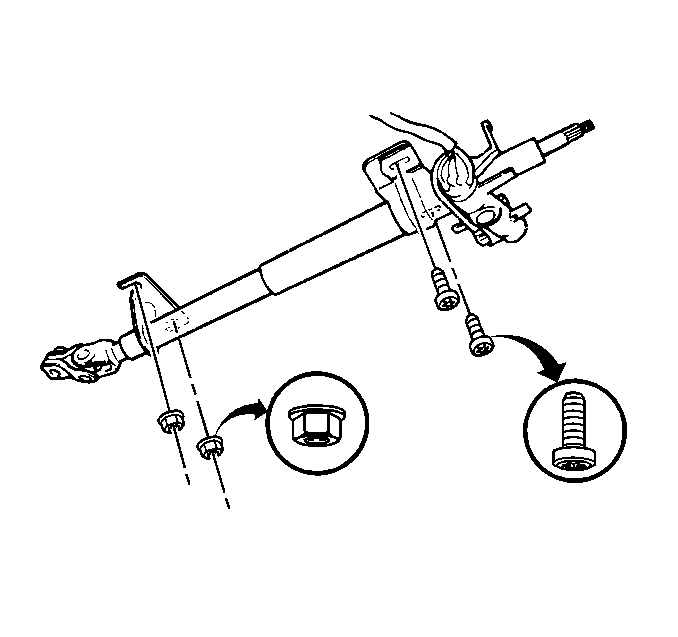
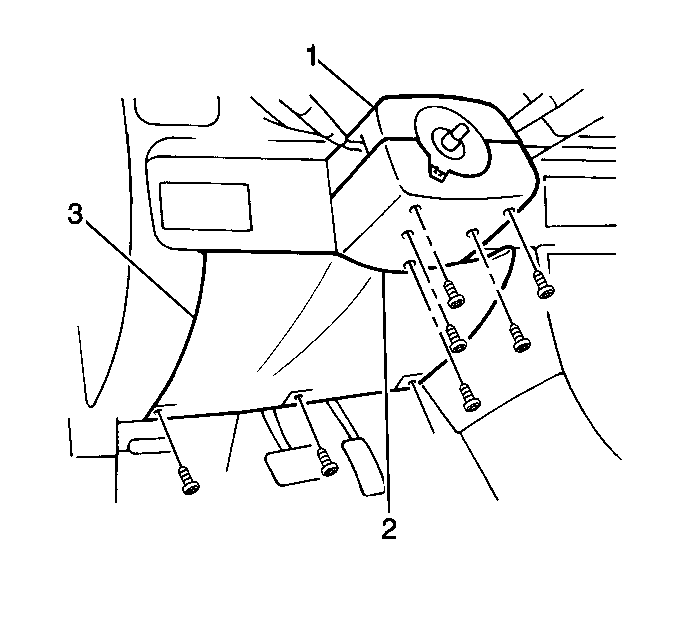
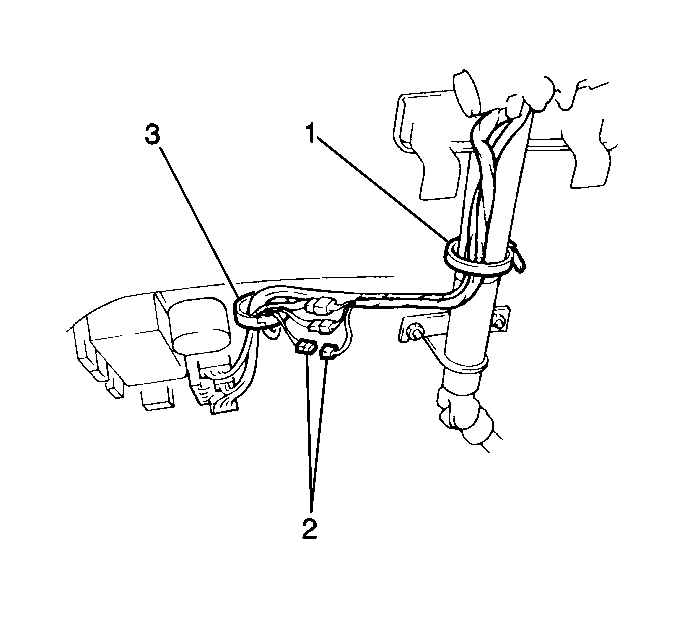
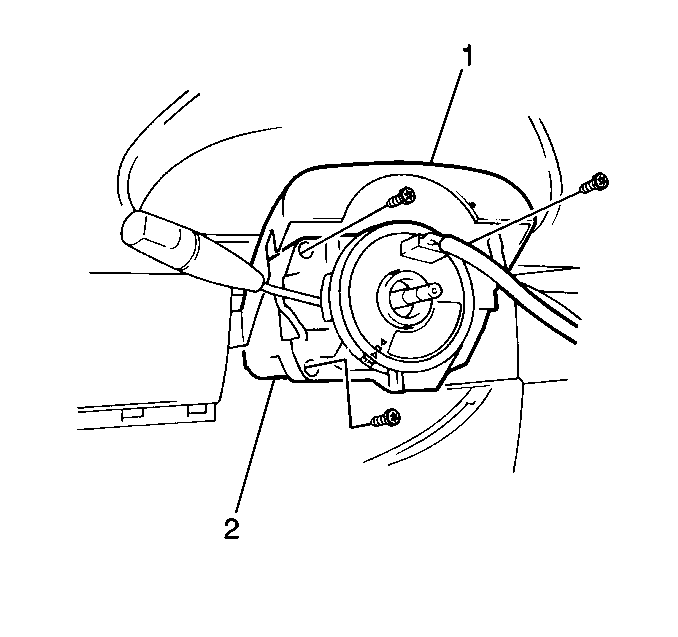
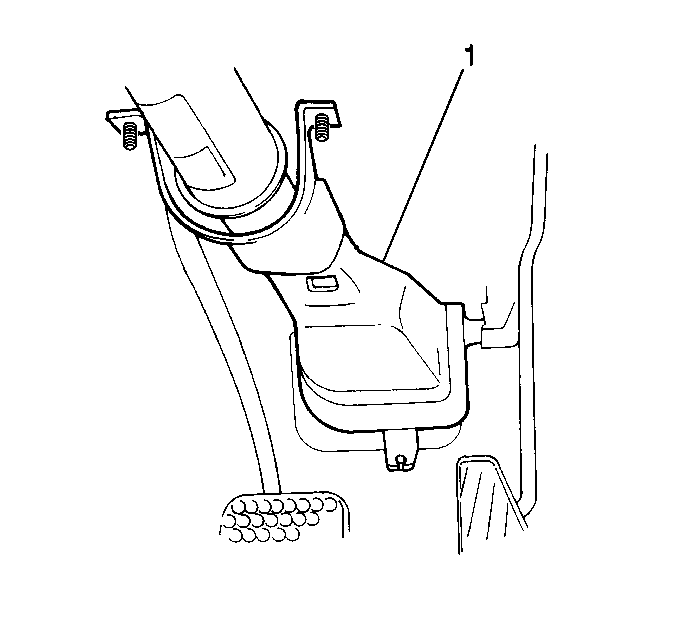
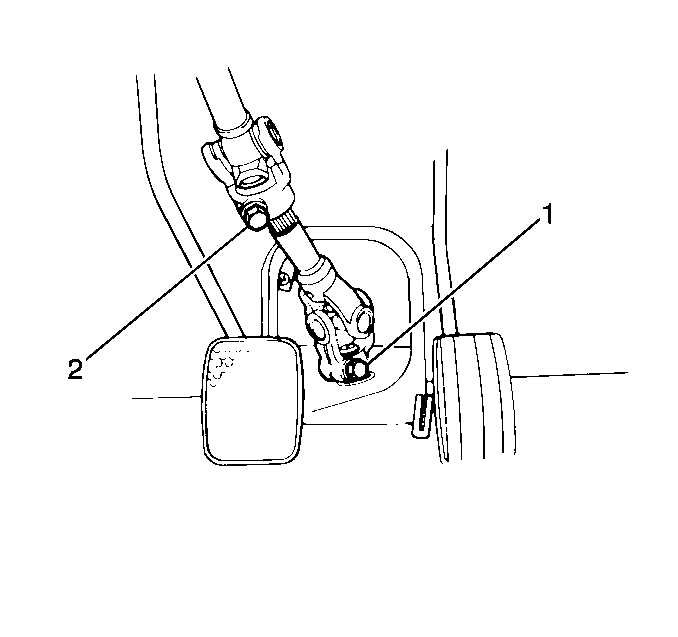

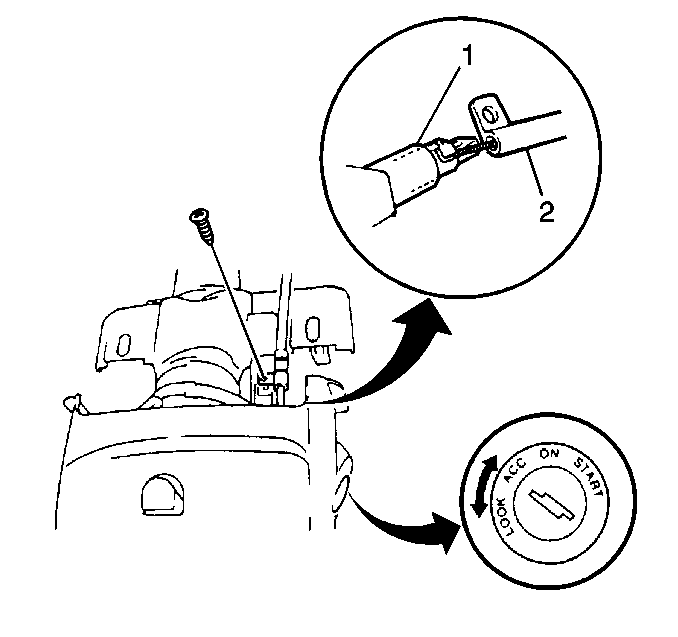
Installation Procedure
- Install the ignition switch to the steering column assembly. Refer to Ignition Switch Replacement - On Vehicle .
- Align the flat section of the steering shaft lower spline (1) with the pinch bolt hole in the steering shaft joint (2).
- Install the steering shaft (4) to the steering shaft joint (2).
- Secure the steering shaft joint with the steering shaft joint upper pinch bolt (2). Do not fully tighten the bolt.
- For models with automatic transaxles only, install the shift interlock cable (2) to the ignition switch.
- Secure the shift interlock cable with the screw (automatic transaxle models only). Refer to Interlock Cable Replacement in Automatic Transmission.
- Position the steering column assembly under the instrument panel.
- Secure the steering column assembly with the 2 upper mounting bolts and the 2 lower mounting nuts. Do not tighten the upper mounting bolts fully.
- Install the steering shaft joint cover (1) by hand.
- Reposition the driver side floor carper.
- Connect all of the ignition wiring connectors at the junction block.
- Install the SIR coil and combination switch (2) to the steering column.
- Secure the SIR coil and combination switch (2) with the 3 screws.
- Connect the SIR coil and combination switch electrical connectors.
- Secure the harness to the steering column with the wire bands (1).
- Install the upper steering column cover (1) and the lower steering column cover (2).
- Secure the steering column covers with the 5 screws.
- Install the knee bolster. Refer to Knee Bolster Replacement in Instrument Panel, Gauges and Console.
- Install the steering wheel, if you removed the steering wheel. Refer to Steering Wheel Replacement .
- Connect the negative battery cable.
- Enable the SIR. Refer to Enabling the SIR System in SIR.
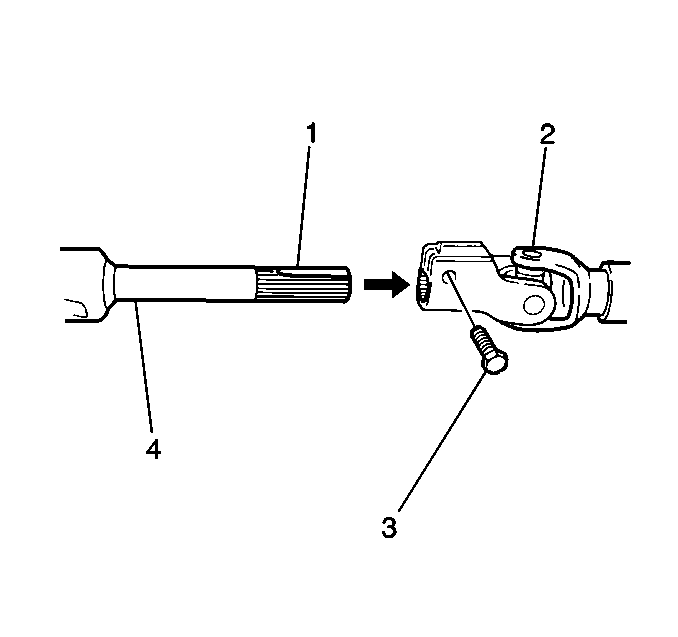
Important: Do not service the steering shaft and the steering column separately. If you find damage in either the steering shaft or the steering column, replace the unit as an assembly.

Notice: Use the correct fastener in the correct location. Replacement fasteners must be the correct part number for that application. Fasteners requiring replacement or fasteners requiring the use of thread locking compound or sealant are identified in the service procedure. Do not use paints, lubricants, or corrosion inhibitors on fasteners or fastener joint surfaces unless specified. These coatings affect fastener torque and joint clamping force and may damage the fastener. Use the correct tightening sequence and specifications when installing fasteners in order to avoid damage to parts and systems.
Tighten
| • | Tighten the lower steering column mounting nuts to 14 N·m (10 lb ft). |
| • | Tighten the steering shaft joint upper pinch bolts to 25 N·m (18 lb ft). |




Tighten
Tighten the upper steering column mounting bolts to 14 N·m
(10 lb ft).
